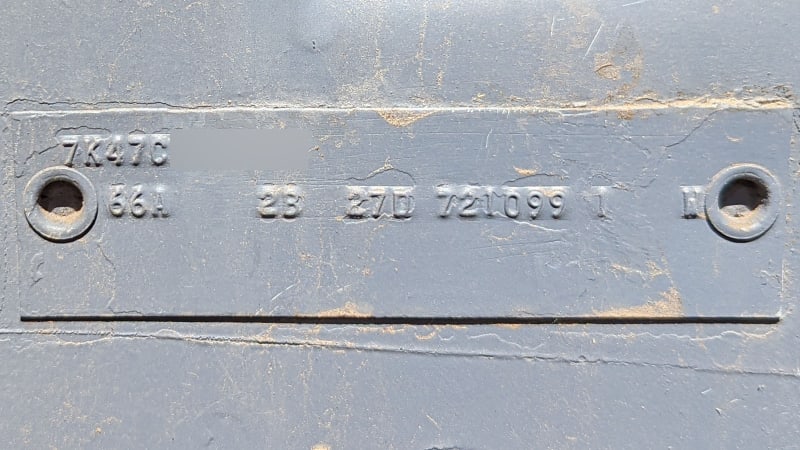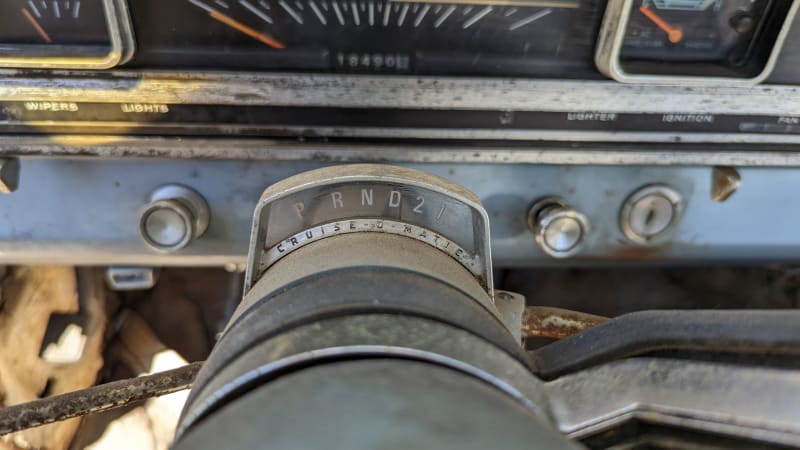Junkyard Gem: 1967 Ford Fairlane Ranchero

After decades of making plenty of pounds selling coupe utilities Down Under (Australia didn’t switch to the dollar and its futuristic decimalized system until 1966), Ford decided to begin selling a modern ute in the United States for the 1957 model year. This was our introduction to the Ranchero, and it was the first of many cartrucks (or truckcars, if you prefer) sold during the 1960s-1980s American heyday of this vehicle type. For 1960, the Ranchero moved to Ford’s new compact platform, becoming the Falcon Ranchero through 1965. Then things got a bit strange in Ranchero-Land; the Falcon moved to a shortened version of the midsize Fairlane’s chassis for 1966, with the Ranchero losing the Falcon name but otherwise looking like a Falcon from the front doors forward. For 1967, the Ranchero became a Fairlane with a pickup bed… but just for that lone year. Here’s one of those Fairlane Rancheros, found last summer in a car graveyard near Denver (sorry, everyone, it got crushed a couple of months ago).
Named after Henry Ford’s estate in Dearborn, the Fa in the United States through 1970 (after which the Torino name took over). Australians could buy new Fairlanes all the way through 2007.

After 1967, the Ranchero stayed on Ford’s midsize chassis through its discontinuation in 1979, and it never again had to add the badges of another Ford model next to its own.

The build tag tells us that this car was built in Kansas City, and that it came with a two-barrel 289-cubic-inch (4.7-liter) Windsor V8 from the factory. I should have scraped the primer off this tag to determine the sales office, transmission type, and so on, but I didn’t realize that information was painted over with gray primer until later.

This is definitely a Windsor V8 with a two-barrel carburetor, so it might even be the original mill that the lineworkers bolted in back in KC. If so, it was rated at 200 horsepower and 282 pound-feet.

The body trim in the cab and primer all around suggest that this truckcar was somebody’s project that never got finished.

The interior is missing the seats, but doesn’t look unsalvageable otherwise.

A three-on-the-tree column-shift manual transmission was base equipment in the ’67 Fairlane Ranchero. With the 289, you could upgrade to a four-on-the-floor manual or a three-speed Cruise-O-Matic automatic. This one has the automatic.

There’s some rust in the usual spots, but it’s all fixable. I’m never surprised to see 1960s Detroit sedans in yards like this, because millions were sold and few enthusiasts want to drive a classic four-door today. I will admit that I was startled to find a mid-to-late-1960s Ranchero in such a place, however, because these machines have a devoted following willing to invest the time and money required to fix one up. Maybe not in Denver!

Ranchero purists will be displeased about the ’64 GTO hubcaps, but they do look pretty good if you don’t notice the lettering.
Fairlane advertising got pretty lysergic around this time.



